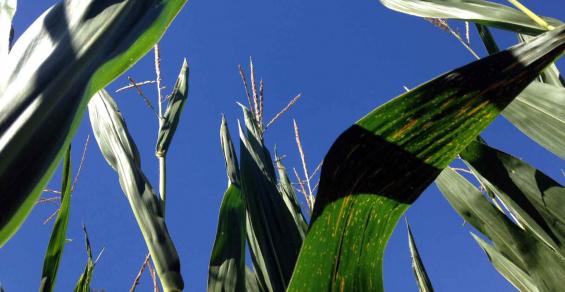Climate during the winter of 2021-2022 and current climate during the first half of the growing season have had tremendous impact on diseases affecting our crops.
Peanuts in 2021 were greatly affected by leaf spot and less affected by white mold and Tomato spotted wilt. If trends continue, I predict that white mold and TSWV will dominate the peanut crop in 2022 and leaf spot will be less of a threat.
The reason for this difference between years is largely based on climate. Climate is defined as the weather conditions prevailing in an area over a period of time. For many growers in the southeastern United States, climate during the winter of 2021-2022 and current climate during the first half of the growing season have had tremendous impact on diseases affecting our crops.
The winter of 2021-2022 was classified as a La Ni?a. La Ni?a winters in the southeastern United States are typically warmer and drier than average. I believe this “warmer and drier” winter impacted our 2022 crops in a number of ways.
First, damage from plant-parasitic nematodes was quite common in fields planted to corn. Warm weather allowed nematodes to remain active longer into the winter months and to become active earlier in the spring. Volunteer corn, cotton, and peanuts that survived into January fed the hungry nematodes.
Rusts
Second, southern corn rust was found earlier in Georgia in 2022 than it has been at any time since I have been an Extension specialist. As southern corn rust must have a living host for survival, this disease must be reintroduced back into the state each year following winter months. Southern corn rust likely survived on volunteer corn for some time into the winter months and that the disease overwintered on corn close to Georgia.
Tar spot, a fungal disease important in Midwest corn production and first identified in Georgia in 2021, was found surviving on volunteer corn in Tift County, Ga., on 28 January. The first discovery of tar spot in Georgia this season, in fact the only tar spot known in the state at the time of this writing, was in this same corn field within 100 feet of where the corn overwintered.
The first half of the 2022 growing season has for some growers been characterized by very hot and dry daytime conditions punctuated by intermittent rain showers, high humidity, and warm nights. Recognizing the impact that such conditions will have on diseases will help growers minimize losses and to improve profitability.
Southern corn rust has threatened corn production since late-May. Spread of southern rust is favored by high temperatures and high humidity. First found on 1 June, within only a matter of weeks this disease had been spread to counties across Georgia’s Coastal Plain. However, Asian soybean rust, a disease that must also be reintroduced into Georgia, has for now only been found in two counties. While development and spread of soybean rust is favored by humid conditions, it is stifled by the hot conditions that favor southern corn rust.
Crown Rot
Aspergillus crown rot is an important seedling disease of peanuts. Aspergillus crown rot is most common when conditions are hot and dry; hot soils will damage the tender shoot and taproot which facilitates infection by the fungus. Aspergillus crown rot is still being observed now even two months after planting, a true testament to the heat and drought faced by growers.
Unfortunately, Aspergillus crown rot is not the only disease favored by hot daytime temperatures, high humidity, and warm nights. Stem rot (“white mold”) is also favored by such and I predict that this disease will be especially severe in 2022. Stem rot/white mold has already been observed not only killing peanuts but also soybeans and even cotton. Growers are advised to be aggressive in protecting their peanut crop with fungicides and may even need to consider protecting soybeans as well.
The cooler and wetter weather of the 2021 field season was especially bad for foliar diseases, to include peanut leaf spot, and target spot and areolate mildew of cotton. While there is still a long way to go until harvest, if current conditions persist, I predict less threat from these leaf diseases and more threat from diseases favored by hot and dry weather, to include white mold and charcoal rot (on corn cotton and soybeans). Unfortunately, aflatoxin is also more severe on peanuts grown in such climate.
Three things growers can do to battle disease in the current climate:
Recognize diseases that are often more severe when conditions are hot and dry.
Consider management strategies that could help. For example, more aggressive use of fungicides and irrigation to reduce plant stress.
At harvest, ensure that corn and peanuts from drought-stress fields are stored separately from irrigated fields to avoid contamination with aflatoxin.
Finally, as my friend and colleague Tim Flanders often reminds me, “Stay cool! It’s hot out there!”




